It was the strangest phenomenon – white spirals on the sandy bottom of Ardmair Bay near Ullapool that resembled loosely-coiled strips of gauze.
Intrigued, I took three deep breaths and dived down to investigate. I gently touched one with my forefinger and the white spiral form was soft and yielding, and slightly gelatinous.
I surfaced and blew water out my snorkel tube, and as I lay on the surface to regain breath, I racked my brains as to what these unusual objects were.
The pondering was interrupted by a faint scarlet glimmering on the sea floor, so I dived down once more to be rewarded by a close encounter with one of the most exquisite creatures imaginable. It was a nudibranch, or sea slug, which was about 10 cm long with intricate red patterning set upon an oval, flattened body.
On the upper surface were paler, fleshy tubercles. Adorning the top of the head was a pair of horned projections known as rhinophores, which are sensory organs.
Elated by the discovery, I surfaced again and slowly swam along the surface scanning the seabed below. Once my eyes had become accustomed to their shape and form, more nudibranchs appeared, some of which had paired up with other ones.
It was apparent the animals had moved inshore to breed and the weird white spiral objects were their egg masses. I had never witnessed this species before and as far as I am aware has no common English name, instead known by its scientific nomenclature, Pleurobranchus membranaceus.
Nudibranchs are marvels of nature and are molluscs that lack a protective shell. To overcome the lack of external hard protection against predators, nudibranchs employ noxious chemical defence mechanisms to discourage attack, and their bright colouration acts as a warning signal for predators to keep their distance, much in the same manner as the vibrant yellow and black striped patterning of a wasp.
I continued my underwater exploration and by a sandy margin close to a kelp bed, the long, sinuous tentacles of a tube anemone flickered. The anemone was housed in a calcareous tube mostly buried in the sediment, with only a centimetre of the uppermost section poking above the surface. The long tapering, brownish tentacles of the anemone spilled over the top of tube, seeking to trap miniscule food items floating past in the water.
A short while later, a colourful disc of red and blue-grey glinted from the seabed. It was a dahlia anemone, another new discovery for me in the bay. Nearby, several more lay scattered on the coarse sandy sediment and were surrounded by thick flushes of shimmering seaweed.
Dahlia anemones are well-named for they bear a strong resemblance to dahlia flowers, and as I drifted away from them and into a thick understorey of limey-green sea lettuces and other vibrant seaweeds, it felt like I was privy to the enchanting world of a secret underwater garden where colour shone in every direction and new nature surprises unfolded at every turn.
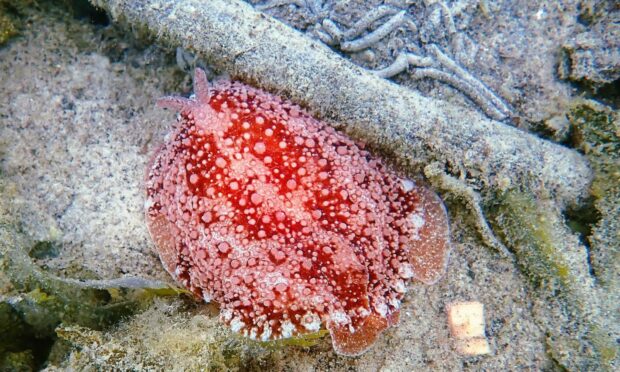
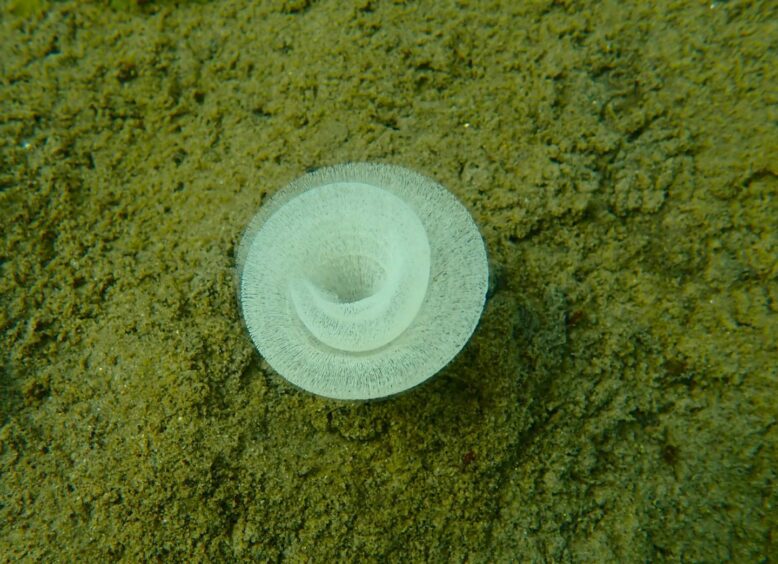
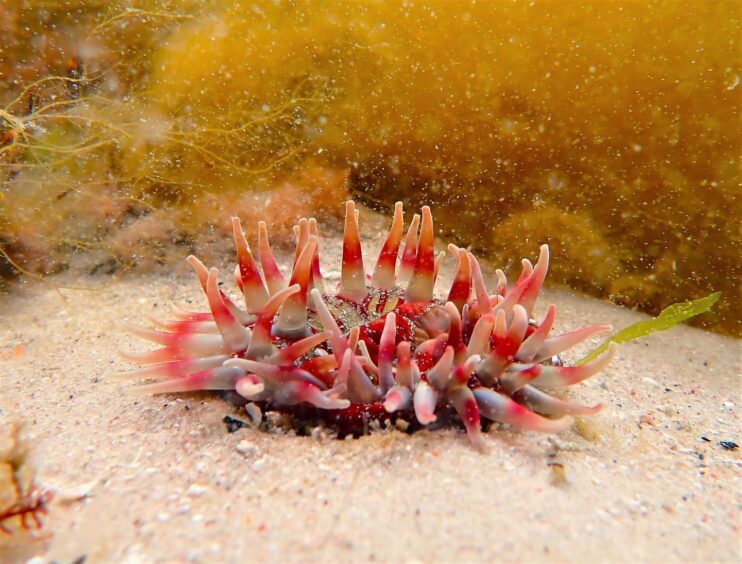
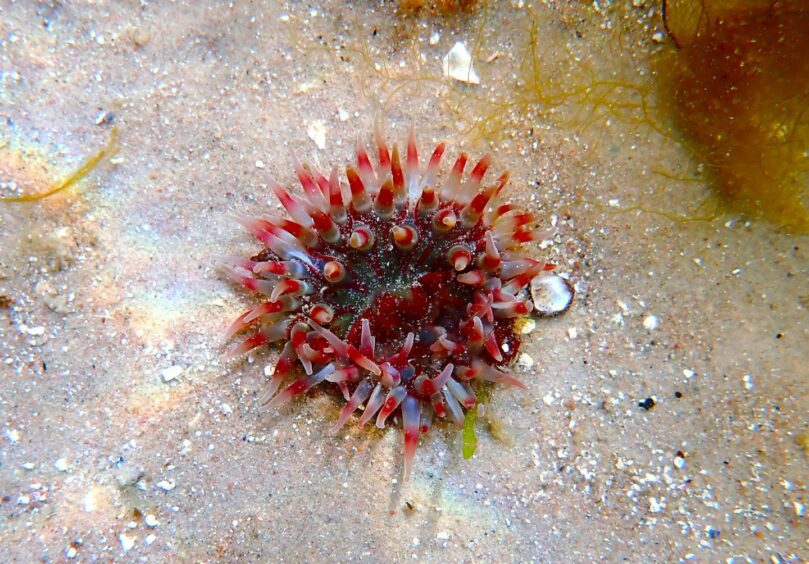
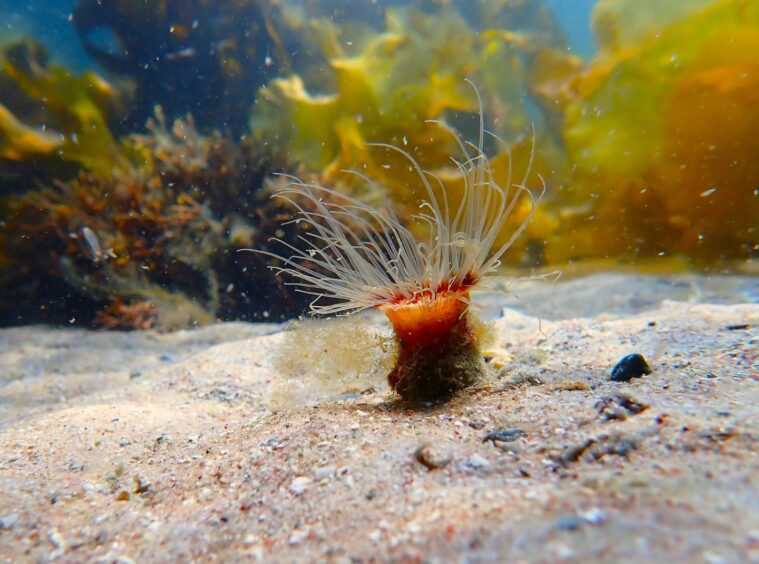










Conversation